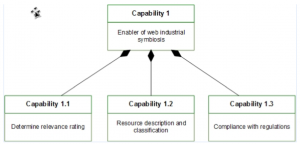Use case at CLMS
One of the use case was carried out at CLMS (UK) Ltd, a company established in 1998 with a vision to simplify business change management, with specific focus on IT Systems. CLMS designs and produces business-driven IT systems based on an agile methodology and with the ability of maintaining their services and to be constantly aligned with cutting edge technology trends.
The vision and business objective of CLMS is achieved through an in-house capability which is offered by the zAppDev environment. zAppDev is a cloud-based application software development environment. It supports high-level modelling, design validation and code generation in order to automate repetitive tasks and produce consistent applications for multiple platforms. Changes in the design and technology are incorporated fast through an automation engine, using model compiler templates. zAppDev facilitates IT and business teams’ collaboration; applications can be tested immediately after each build. Clients of CLMS can test their application from day one and throughout the design and development life cycle.
Using zAppDev in the CaaS project CLMS in collaboration with SU developed the i-symbiosis application. This application involved essentially two major activities, namely, (a) development of the i-symbiosis application using zAppDev, and (b) extending the functionality of this application with capability driven concepts in terms of both design and run-time.
Industrial Symbiosis (IS) is an association between two or more industrial actors in which the wastes or by-products of one become the raw materials for another. This collaboration between two or more companies is called a Synergy. As a result, waste across a wide range of industrial activities, including chemicals, plastic, biomass, electronic and plastic, is reduced, and costs in raw materials, waste discharge and energy consumption are saved.
materials, waste discharge and energy consumption are saved.
In this use case there were three contextual factors that were considered, that, generally, affect industrial symbiosis, location, resources, and legislation. Thus these three contextual factors gave rise to the design and running of three capabilities, as shown in the diagram.
The capabilities are supported by the CDD environment conceptually shown in the diagram below. The Capability Context Platform’s (CCP) input consists of data relevant to changing context. For this use case, such data include location, type of resources and legislative measurable properties.
The CNA platform is responsible to manage and calculate the measurable properties of context elements that are collected from the CCP component. The CNA is used to monitor the context elements values. Furthermore, the CNA detects the need for adjustments. The information of the adjustment to be triggered is forwarded to the CDA. In this use case, the CDA is the i-Symbiosis platform developed by using the zAppDev development tool.

Below are two videos presenting (1) the use of zAppDev for development of the i-symbiosis case, and (2) using the CDD environment for capability design.